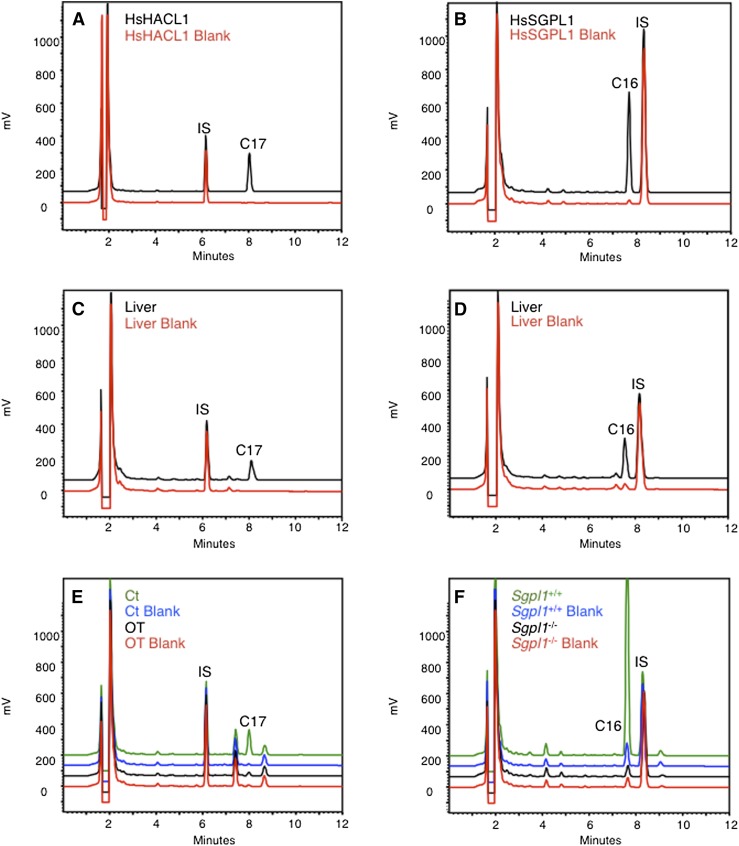Fig. 6.
Analysis of enzymes producing fatty aldehydes. A: Human recombinant HACL1 (5 μg purified protein) was incubated at 37°C for 5 min with 2-hydroxyoctadecanoyl-CoA as substrate (40 μM). A blank reaction was also included, where no substrate was added. The reaction mixtures were fortified with IS (C13-al; 1.5 nmol) before derivatization. B: Human recombinant SGPL1 (0.8 mg protein of soluble E. coli extract) was incubated at 37°C for 60 min with sphinganine-1-phosphate as substrate (40 μM). A blank reaction was also included, where no substrate was added. The reaction mixtures were fortified with IS (C17-al; 2 nmol) before derivatization. C: Liver homogenates of Swiss mice (1 mg tissue, corresponding to ∼0.2 mg protein) were incubated at 37°C for 5 min with 2-hydroxyoctadecanoyl-CoA (40 μM), mixtures were spiked with IS (C13-al; 0.74 nmol), and formed aldehydes were analyzed as described in (A). D: Liver homogenates of Swiss mice (2 mg tissue, corresponding to ∼0.4 mg protein) were incubated at 37°C for 60 min with sphinganine-1-phosphate (40 μM), and formed aldehydes were analyzed as described in (B). E: Human fibroblasts were grown either in standard medium (Ct) or in the presence of 1 mM oxythiamine (OT) for two days before HACL1 activity measurement. Fibroblast lysates (0.2–0.5 mg protein) were then incubated at 37°C for 5 min with 2-hydroxyoctadecanoyl-CoA (40 μM). Blank reactions were also included, where no substrate was added. The reaction mixtures were spiked with IS (C13-al; 0.74 nmol) before derivatization. Note the presence in fibroblasts of endogenous C16-al and C18-al, eluting at 7.4 and 8.7 min, respectively. F: Lysates of mouse fibroblasts (∼0.2 mg protein), obtained from wild-type or Sgpl1−/− C57BL6 embryos, were incubated at 37°C for 60 min with sphinganine-1-phosphate (40 μM). Blank reactions were also included, where no substrate was added. The reaction mixtures were spiked with IS (C17-al; 2 nmol) before derivatization, followed by analysis of the generated C16-al. Assays without substrate serve to correct for nonSGPL1-derived C16-al.

